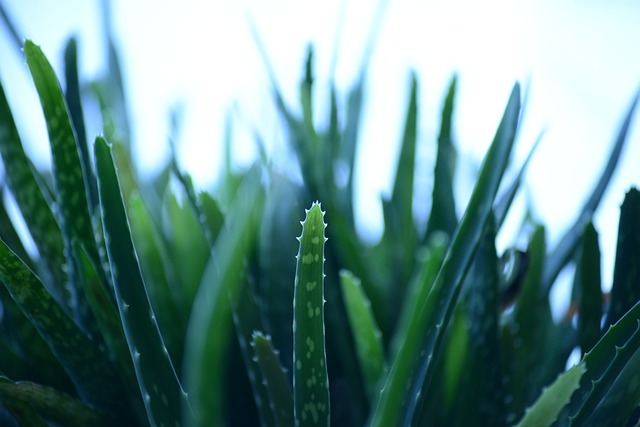Container gardening has become increasingly popular, especially for urban dwellers with limited outdoor space. Cucumbers, with their sprawling vines and refreshing fruits, might seem challenging for container cultivation, but with the right approach, they can thrive in pots. Starting with high-quality cucumber seeds is the first step to success in container cultivate thriving cucumber plants in containers.
Choosing the Right Container
Selecting an appropriate container is crucial for successful cucumber cultivation. Consider the following factors:
- Size: Cucumbers need ample space for their roots. Choose containers that are at least 12 inches deep and 14-16 inches in diameter.
- Material: Plastic, ceramic, and fabric pots are all suitable. Ensure the container has adequate drainage holes.
- Color: Light-colored containers reflect heat, keeping the soil cooler in hot climates.
Table 1: Container Size Recommendations
|
Plant Type |
Minimum Container Size |
Ideal Container Size |
|
|
Bush |
5 gallons |
7-10 gallons |
|
|
Vining |
7 gallons |
10-15 gallons |
Suitable Cucumber Varieties for Containers
Not all cucumber varieties are well-suited for container growing. Here are some recommended cultivars:
Table 2: Recommended Cucumber Varieties for Containers
|
Variety Name |
Type |
Days to Maturity |
Special Features |
|
Spacemaster |
Bush |
55-60 days |
Compact, disease-resistant |
|
Salad Bush |
Bush |
55-60 days |
All-female flowers, high yield |
|
Patio Snacker |
Vining |
55-60 days |
Short vines, great for trellising |
|
Lemon Cucumber |
Vining |
65-70 days |
Unique round, yellow fruits |
|
Picolino |
Vining |
45-50 days |
Mini cucumbers, high yield |
|
Bush Champion |
Bush |
55-60 days |
Heat-tolerant, disease-resistant |
Soil and Planting
Proper soil preparation is essential for healthy cucumber growth in containers:
- Soil Mix: Use a high-quality, well-draining potting mix enriched with compost.
- pH Level: Aim for a slightly acidic to neutral pH (6.0-7.0).
- Planting: Sow seeds directly in the container or transplant seedlings after the risk of frost has passed.
- Spacing: Plant 2-3 seeds or seedlings per large container, thinning to the strongest plant later.
Trellising and Support
Most cucumber varieties, especially vining types, benefit from vertical support:
- Trellis Types: Use bamboo stakes, tomato cages, or decorative obelisks.
- Installation: Set up the trellis at planting time to avoid disturbing roots later.
- Training: Gently guide young vines onto the support structure.
Watering and Fertilization
Consistent moisture and adequate nutrition are crucial for cucumber growth:
- Watering: Keep the soil consistently moist but not waterlogged. Water deeply when the top inch of soil feels dry.
- Mulching: Apply a 2-inch layer of organic mulch to conserve moisture and regulate soil temperature.
- Fertilization: Use a balanced, water-soluble fertilizer every 2-3 weeks, or incorporate slow-release granular fertilizer at planting time.
Table 3: Fertilization Schedule for Container Cucumbers
|
Growth Stage |
Fertilizer Type |
Application Rate |
Frequency |
|
Planting |
Slow-release (balanced) |
As per package directions |
Once |
|
Vegetative Growth |
Water-soluble (balanced) |
Half-strength |
Every 2-3 weeks |
|
Flowering/Fruiting |
Water-soluble (high K) |
Half-strength |
Weekly |
Pest and Disease Management
Container-grown cucumbers can still face pest and disease issues:
- Common Pests: Watch for aphids, spider mites, and cucumber beetles.
- Diseases: Powdery mildew and bacterial wilt can affect container cucumbers.
- Prevention: Ensure good air circulation, avoid overhead watering, and remove affected leaves promptly.
- Treatment: Use insecticidal soap for pests and approved fungicides for diseases when necessary.
Table 4: Common Cucumber Pests and Control Methods
|
Pest |
Symptoms |
Control Methods |
|
Aphids |
Curled leaves, stunted growth |
Insecticidal soap, neem oil |
|
Spider Mites |
Stippled leaves, fine webbing |
Increase humidity, miticides |
|
Cucumber Beetles |
Holes in leaves, wilting |
Row covers, hand-picking, organic sprays |
Harvesting and Maintenance
Proper harvesting and maintenance ensure continued production:
- Harvesting: Pick cucumbers when they reach the desired size, typically 6-8 inches for slicing varieties.
- Frequency: Harvest every 2-3 days to encourage continued production.
- Pruning: Remove yellowing or diseased leaves to improve air circulation.
- End-of-Season Care: Compost spent plants and sanitize containers for next season.
Special Considerations for Different Climates
Adapt your container cucumber growing techniques based on your climate:
Hot Climates:
- Use light-colored containers to reflect heat.
- Provide afternoon shade to prevent heat stress.
- Water more frequently, possibly twice daily during peak summer.
Cold Climates:
- Start seeds indoors and transplant after frost risk passes.
- Use black containers to absorb heat.
- Consider using season extenders like mini greenhouses or row covers.
Temperate Climates:
- Take advantage of the full growing season by planting early with protection.
- Use succession planting for continuous harvest.
Table 5: Climate-Specific Adjustments for Container Cucumbers
|
Climate Type |
Container Color |
Watering Frequency |
Special Considerations |
|
Hot |
Light |
1-2 times daily |
Provide afternoon shade |
|
Cold |
Dark |
Every 2-3 days |
Use season extenders |
|
Temperate |
Any |
As needed |
Implement succession planting |
Companion Planting in Containers
Maximize space and improve growth by companion planting:
- Beneficial Companions: Plant basil, dill, or nasturtiums to attract pollinators and repel pests.
- Avoid: Keep cucumbers away from potatoes and aromatic herbs like sage and mint.
- Vertical Gardening: Combine cucumbers with shallow-rooted plants like lettuce or radishes.
Troubleshooting Common Issues
- Poor Fruit Set: Ensure adequate pollination by hand-pollinating if necessary.
- Bitter Fruits: Caused by stress; maintain consistent watering and avoid high temperatures.
- Yellowing Leaves: May indicate nutrient deficiency or overwatering; adjust fertilization and watering practices.
- Stunted Growth: Check for root-bound plants and consider repotting if necessary.
Conclusion
Growing cucumbers in containers can be a rewarding experience, providing fresh, homegrown produce even in limited spaces. By selecting appropriate varieties, providing proper care, and adapting to your specific climate, you can enjoy a bountiful harvest of crisp, delicious cucumbers. Remember that container gardening often requires more frequent attention to watering and fertilization than traditional garden beds. With patience and attentive care, your container-grown cucumbers will thrive, offering a refreshing addition to your home-grown produce. Whether you're a seasoned gardener or a beginner, the satisfaction of plucking your own cucumbers from a patio or balcony garden is unmatched. Embrace the challenges and joys of container cucumber cultivation, and enjoy the fruits of your labor all season long.






